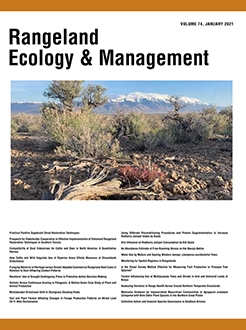Invasive plants can have significant negative effects on human and ecological communities, including reduced productivity and biodiversity and increased fire risk. Effective mitigation of invasive species likely requires action by heterogeneous actors who span jurisdictions, sectors, and levels of governance. While there has been significant research to develop targeted mitigation techniques that slow or halt the spread of specific invasive plants, there has been relatively little complementary work to develop knowledge about the implementation of these management techniques through effective governance systems. To address this gap, we interviewed and conducted archival research on land managers involved in the mitigation of buffelgrass (Pennisetum ciliare, syn: Cenchrus ciliarus) invasion in southern Arizona to investigate how existing and emerging governance arrangements encourage or undermine individual and collective action to manage invasive plants. Our results show that a key challenge of managing invasive species is identifying the mechanisms that will allow heterogeneous actors to overcome internal barriers to coordination with others and enable collective action. These internal barriers are multifaceted, involving laws and policies, cultural traditions and mandates, the availability of monetary and human resources, and information on causes and consequences of species invasion and effective approaches to mitigation. Approaches to solving these problems must include improved knowledge of internal institutional structures and the opportunities and barriers they present to collective action, the preferences of heterogeneous actors when presented with information about future ecosystem conditions absent coordination, the factors that prevent individuals within different organizations from following through on commitments to participate in collective action institutions, and how each of these conditions affects the availability and persistence of resources for mitigation. Together, improved knowledge of the relationships between these factors may provide new approaches to proactive management of emerging resource management challenges, from invasive species to emerging diseases.
How to translate text using browser tools
4 January 2021
Collective Action and Invasive Species Governance in Southern Arizona
Aaron M. Lien,
Elizabeth Baldwin,
Kim Franklin
ACCESS THE FULL ARTICLE





